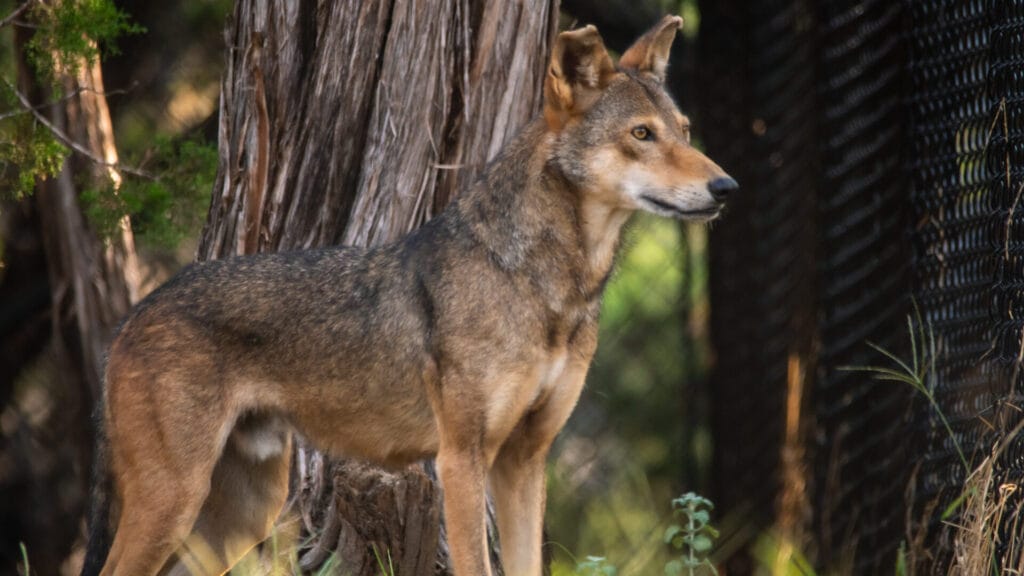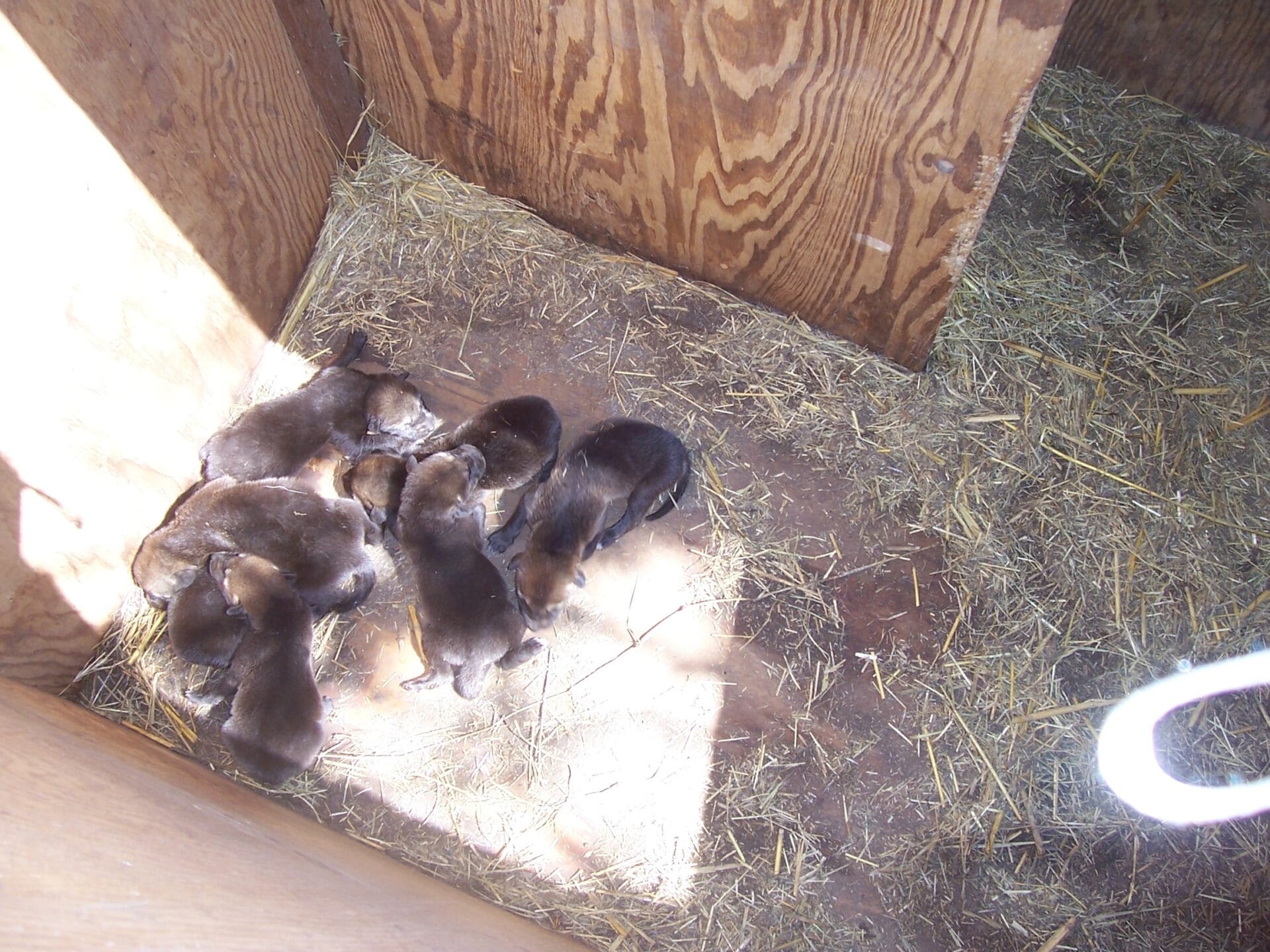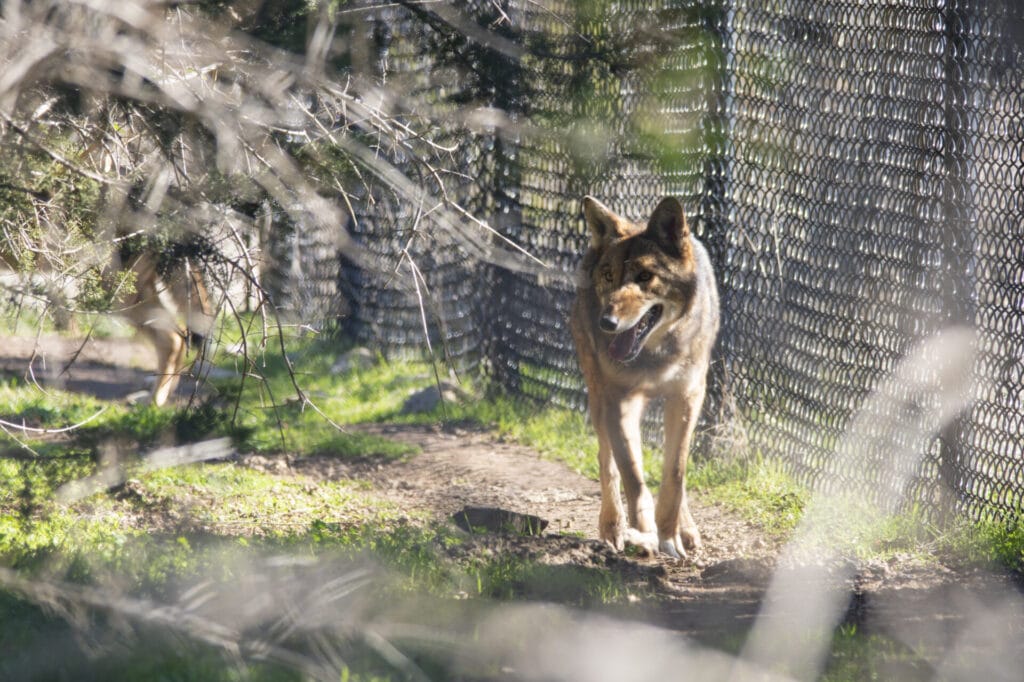For decades, the conservation community in the United States has been working tirelessly to save our one and only endemic wolf species. The American Red Wolf should have icon status, being the only large predator species native solely to the United States. Instead, any modern fame they’ve attained comes not from the species’ importance to our ecosystems, but from its nearly catastrophic decline. Once abundant throughout the southern and eastern U.S., red wolves are now the most endangered canid on Earth. Still, hope remains for the red wolf, as conservation facilities like Fossil Rim work with the U.S. Fish and Wildlife Service (USFWS) to bring the American Red Wolf back to its historic range.

What’s New With Wild Red Wolves?
The USFWS regularly provides updates on the Red Wolf Recovery Program, a collaborative plan to help increase wolf populations in North Carolina. The state boasts the only remaining wild population of red wolves, estimated to be between 28 and 31 individuals as of August 2025.
One of the biggest challenges facing any species with a low population is the lack of genetic diversity. Inbreeding causes long-term health problems that can only harm the population further. To combat this, scientists have been taking advantage of a process called cross-fostering, where wolf pups born in human care are placed into wild dens, with the goal of them being accepted and raised by a wild mother. In April 2025, this was successfully achieved for the first time with red wolves when a pup born as part of a captive breeding program was swapped with members of a six-pup litter in Eastern North Carolina. As of early August, the pup and its foster siblings were confirmed to be alive and healthy. This is great news not only for the pup itself, but for the future of the species, as this success will pave the way for future cross-fosterings and hopefully lead to a boost in healthy genetics to the overall population.

Fossil Rim’s Role
Fossil Rim has participated in the restoration of American Red Wolves since 1989. We currently house 11 individuals, making up two family packs. Breeding red wolves is notoriously tricky, and raising healthy pups is even trickier thanks to their weak genetics. In 2022, Fossil Rim welcomed our first surviving red wolf pup in 15 years, a singleton named Rue. Since then, Rue has gone on to become a mother herself, giving birth to three pups in 2024 and one pup in 2025. Our other breeding female welcomed a litter of four pups in 2024, more incredible additions to the recovery program.
All of the red wolves at Fossil Rim live in the Intensive Management Area, or IMA. The IMA has been set aside for species that not only require close monitoring, but also more privacy in order to thrive. Red wolves are a naturally skittish species, preferring to live quiet lives away from humans and potential harm. To ensure our wolves are not stressed, and to allow them to maintain their natural instincts, our packs live in secluded areas accessible only by specific staff members. Occasionally they may be viewed on a behind-the-scenes tour, though this is determined based on their comfort level.

Red Wolf Week 2025
Red wolf week takes place every year starting September 14th. This date marks the anniversary of the release of the first captive-bred wolves back into the wild. It exists to continue to raise awareness for the species, and to update the public on progress being made towards their conservation. To learn more about the Red Wolf Recovery Program, you can visit fws.gov/project/red-wolf-recovery-program.
Knowledge is the public’s strongest tool for protecting wolves in their own communities, especially those living near red wolf habitat in North Carolina. Learning more about their plight and sharing it with others not only spreads awareness for the species, but can increase empathy for a historically misunderstood animal. Every guest who has visited Fossil Rim has supported red wolf conservation through their ticket purchase, and we hope to continue and grow our work with the species for years to come. Here’s to the American Red Wolf, and the bright future of an American icon.

